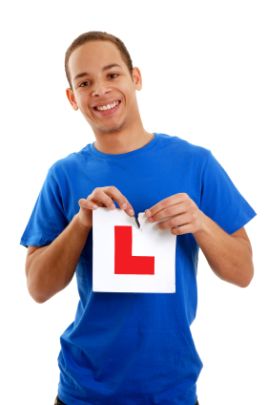The automatic car explained
In most cases, you will learn to drive with a car that has gears in the United Kingdom.
However there are people who prefer to learn in an automatic car, and there are various driving schools that have the option of letting you drive an automatic and you can pass a driving test with an automatic, you just won't be able to drive a car that has manual transmission gears with that licence. The other way round however is fine - you can learn with gears and then drive a car that has an automatic transmission.
Therefore even if you learn in a car with gears it can be useful to know how automatics work, particularly as if you get a hire car in countries such as the US then you are more than likely going to have an automatic.
One of the main differences you'll find with an automatic is that there are only two pedals: the accelerator and the brake. This can be a little disconcerting, but the reason is simple: there is no need for the clutch because that is what you use when you are changing gears on a manual transmission car.
The gearbox in the automatic car will 'work out' automatically when it should change the gear from higher to lower or lower to higher, and in addition it also makes those changes without you needing to do anything such as depress a clutch.
If you are thinking of learning in an automatic or want to find out more, then read the article on the automatic transmission explained, which is the next article in this section.
Related Articles...
Staying calm in your driving test
There is no doubt that many people get extremely nervous before the driving practical test, and whilst this can be frustrating or disconcerting, it is not necessarily a bad thing. Many people...
The multiple choice theory test
This is the first part of the theory test, and is done at a computer rather than on paper. There are many places around the country whereby you are able to take the theory test. Your driving...
How to book your driving theory test
There is now an online booking system in place that will allow you to book a driving theory test online.
There are also other ways to book a driving theory test: over the phone and you can...
Your engine temperature gauge
These days many of us get into a car without really understanding how any of it works, and even the engine and how it operates and powers the car is a mystery to many.
Well, essentially it...
How to cancel a theory test
When you book a theory test, you of course choose a date that you think you are going to be able to make.
However with the best will in the world, there are a whole range of reasons why on...
Mock Driving Theory
On our Mock Driving Theory page you can practice no fewer than fifteen different mock tests.
Each of them...
Why is there a Hazard Perception Test
The statistics have long shown that the newer the driver, the more likely they are to be involved in accidents on the roads. This is probably because they are inexperienced as drivers, although...
Towing a load such as a caravan
When you tow a vehicle such as a caravan, it is clearly the case that driving conditions will be very different, and much more so again than simply having a heavier load or having a roof rack...
Car Driving Test Fees
This article looks at the costs, which were correct as of October 2009.
A standard car and motorcycle theory test costs £31.
In terms of the practical test, the price is a good deal...
What to do with keep clear markings
Keep clear markings are quite straightforward to understand, although amazingly some people either ignore them or do not appear to understand what they mean!
You will often seen keep clear...
Back to home page of driving theory test questions

